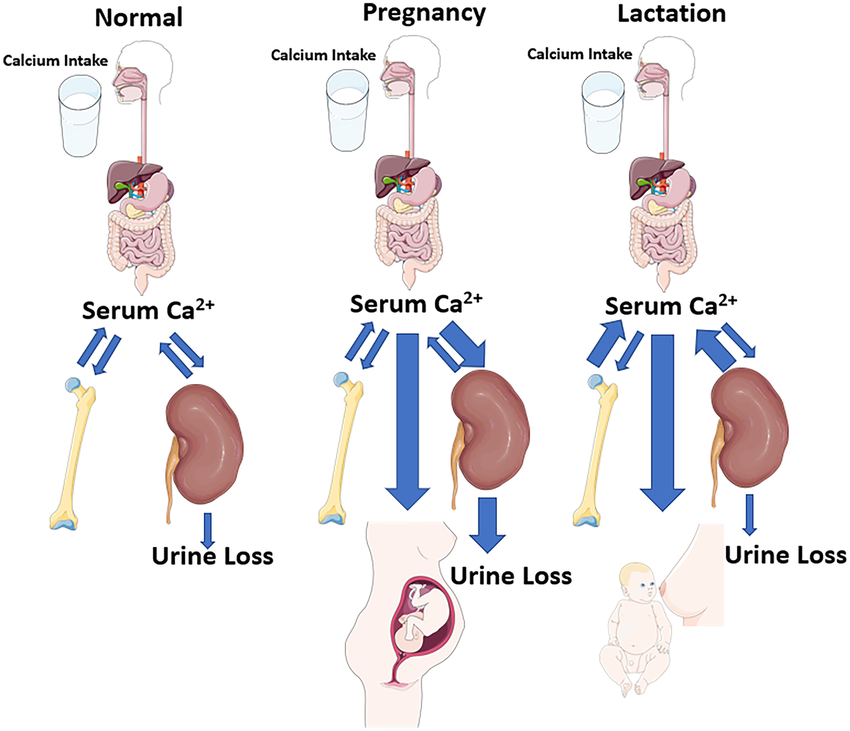Osteoporosis Risk During Pregnancy and Lactation

During pregnancy and lactation, there is an increased need for calcium and vitamin D, and although rare, osteoporosis can occur, presenting clinical outcomes. The human physiology adjusts to meet the calcium and phosphorus needs of the fetus and infant during these periods. This physiological adjustment pertains to mineral balance and skeletal metabolism, returning to normal once pregnancy and lactation are completed.
Changes in Calcium Metabolism During Pregnancy and Lactation:
The major metabolic changes in the mother’s body for fetal and newborn skeletal development include:
– Increased calcium absorption,
– Increased calcium excretion by the kidneys,
– Increased bone resorption during lactation,
– Increased calcium reabsorption by the kidneys during lactation.
Considering these mechanisms and metabolic changes, osteoporosis may develop during pregnancy and lactation.
Symptoms of Osteoporosis During Pregnancy and Lactation:
Symptoms typically appear in the last trimester of pregnancy or the early postpartum period:
– Back pain (most common),
– Bone weakness,
– Fracture formation.
Diagnostic Methods for Osteoporosis During Pregnancy and Lactation:
Diagnosis of osteoporosis may involve blood tests and carefully selected imaging and measurement methods that do not harm the fetus.
Treatment of Osteoporosis During Pregnancy and Lactation:
– Treatment may include vitamin and mineral supplements, selected osteoporosis therapies, and specific treatment plans for fractures if they occur. If related to lactation, adjustments in breastfeeding may also be considered.
Who is at Risk for Osteoporosis During Pregnancy and Lactation?
Preventing osteoporosis is always the first step in treatment. Risk factors associated with osteoporosis during pregnancy and lactation include:
– Frequent pregnancies,
– Multiple births (twins, triplets),
– Thyroid or parathyroid hormone disorders,
– Intestinal diseases causing malabsorption,
– Mandatory use of medications like corticosteroids and heparin,
– Chronic kidney and liver diseases,
– Diabetes (sugar disease),
– Diseases causing bone calcium loss, such as cancer or multiple myeloma,
– Smoking, chronic alcohol use, and substance abuse,
– Low socioeconomic status and nutritional deficiencies,
– Sedentary lifestyle.









